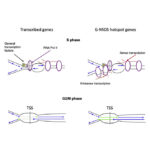Pepperoni, the undisputed king of pizza toppings in America, boasts a flavor that’s both familiar and irresistible. But if you were to embark on a culinary quest for pepperoni in Italy, armed with the literal Italian translation (which amusingly means “bell peppers”), you might be met with puzzled looks. This is because, contrary to popular belief, pepperoni isn’t an Italian invention. Its true origin story is rooted in the vibrant Italian-American communities of New York City in the early 20th century.
The tale of pepperoni is more than just a simple food origin story; it’s a fascinating glimpse into cultural fusion and culinary innovation. While it may not involve corporate espionage or political drama as playfully suggested, understanding where pepperoni comes from reveals a delicious piece of food history. So, let’s delve into the spicy secret origin of this iconic salami and uncover how it became a beloved staple on pizzas across the United States.
The American Genesis of Pepperoni: A Spicy Sausage Story
While pepperoni was born in the United States, its ancestry can be traced back to the rich culinary traditions of Italy and even further to the ancient Roman Empire. The art of preserving meat through drying and smoking has been practiced for millennia, long before the Roman era. However, it was the Romans who truly mastered the curing process, utilizing salt and various spices to extend the shelf life of meat. This innovation allowed for meat to be stored and enjoyed beyond immediate hunts, leading to the development of sausages, including varieties with a vibrant red hue and spicy flavor profiles.
These sausage-making traditions traveled across Europe and eventually crossed the Atlantic with Italian immigrants. In America, these immigrants sought to recreate the flavors of Italian sausages and salami using locally available ingredients. Pepperoni emerged as a result of this culinary adaptation, a spicy, cured sausage designed to echo the flavors of home while embracing New World resources.
New York City holds the distinction of the first documented mention of pepperoni, appearing in 1919. Italian delis and pizzerias throughout Lower Manhattan began featuring this new topping. Initially considered an ethnic Italian dish, pepperoni’s popularity remained relatively localized. It wasn’t until the 1950s, with the rise of commercial gas pizza ovens and the post-World War II boom, that both pizza and pepperoni ascended to national culinary prominence, becoming deeply ingrained in American food culture.
Crafting Pepperoni: From Ground Meat to Spicy Slices
The creation of pepperoni is a fascinating process, transforming simple ingredients into a flavor-packed topping. Pepperoni begins with a blend of ground pork and beef, meticulously combined with a distinctive mix of spices. Garlic, pepper, fennel, and mustard seed are key components, lending pepperoni its signature zesty and aromatic character.
To initiate the curing process, salt, often including sodium nitrite, is added to the meat and spice mixture. This crucial step not only preserves the meat but also contributes to its characteristic color and flavor development. The seasoned meat is then sealed and refrigerated, allowing the curing agents to work their magic. After a few days of curing, the mixture is ready to be stuffed into casings, traditionally made from hog intestines.
Once encased, the meat is formed into links by tying off the casings, creating long ropes of sausage. These links are then refrigerated for approximately twelve hours to solidify their shape, ensuring they hold their form during the subsequent drying process. Finally, the pepperoni links are hung to dry, often in a smoke chamber. This drying and smoking stage further preserves the pepperoni and infuses it with a delightful smoky depth, enhancing its overall flavor profile. This process typically lasts for several weeks, culminating in the flavorful, slightly firm pepperoni we know and love. After drying, the pepperoni is ready to be packaged as links or sliced and prepared for distribution to grocery stores and pizzerias, ready to become the star topping on your next pizza.
Fun Facts: Pepperoni’s Popularity in Numbers
Pepperoni’s popularity in the United States is undeniable, reflected in some truly impressive statistics:
- Americans devour over 250 million pounds of pepperoni annually, translating to more than 340 tons each day.
- Pepperoni reigns supreme as the most beloved pizza topping in the U.S., surpassing even cheese in popularity.
- National Pepperoni Day is celebrated on September 20th each year, a testament to its iconic status.
- In a landmark moment for e-commerce, a pepperoni and mushroom pizza holds the distinction of being among the first items ever ordered online in 1994.
- Pepperoni pizza is the undisputed champion in the frozen pizza aisle, consistently ranking as the most popular variety.
- Approximately 36% of pizza orders include pepperoni, highlighting its widespread appeal.
- The vibrant red hue of pepperoni is largely attributed to paprika, a key spice in its recipe.
These facts underscore pepperoni’s significant place in American culinary landscape, solidifying its position as more than just a pizza topping – it’s a cultural icon.
From its humble beginnings in New York City’s Italian-American communities to its current status as a national favorite, pepperoni’s journey is a testament to culinary innovation and cultural exchange. So, the next time you enjoy a slice of pepperoni pizza, take a moment to appreciate the fascinating story behind this spicy, savory topping that is distinctly American in origin, yet globally loved in flavor.


